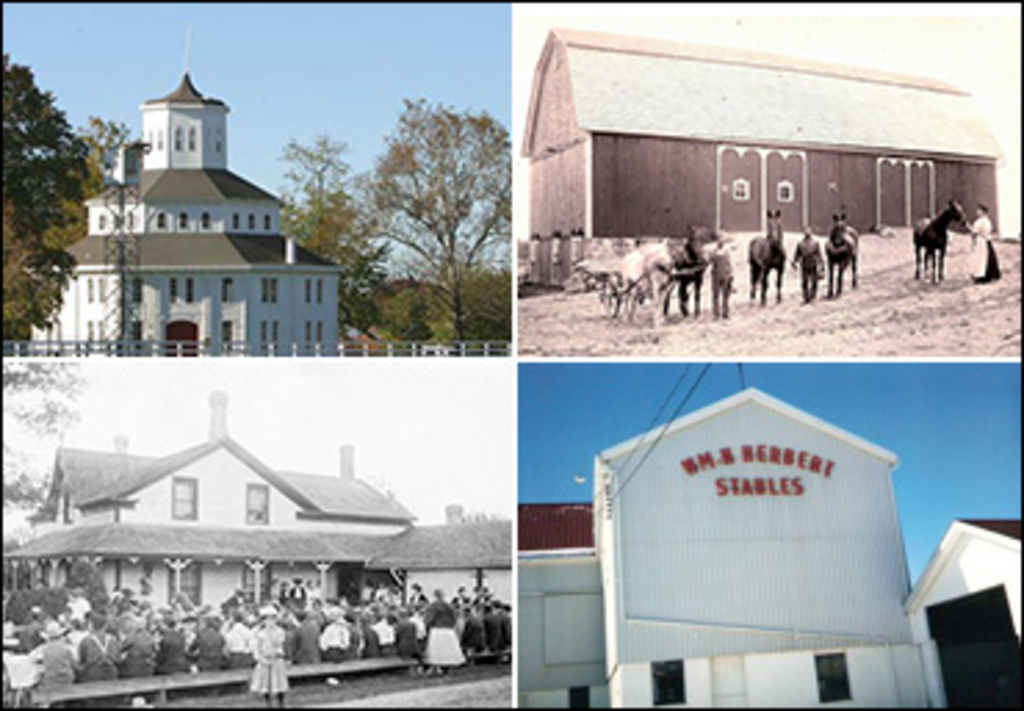
 In this week's edition of Rewind Robert Smith delves into the long and interesting history involving barns, a subject near and dear to the hearts of most horse enthusiasts.
In this week's edition of Rewind Robert Smith delves into the long and interesting history involving barns, a subject near and dear to the hearts of most horse enthusiasts.
The offering includes an interesting and varied collection of old photographs of this now dwindling art form. A further edition on this subject will appear in an upcoming Rewind.
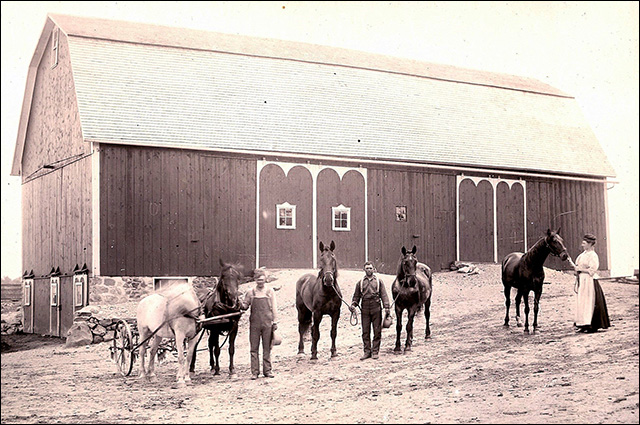
A family proudly displays several prized farm horses in front of their beautiful barn. This barn, which was built circa 1860, is located in Washtenaw County, Michigan, west of Detroit in the Ann Arbor area. It has undergone several facelifts in the past three centuries and is a fine example of a beautiful old barn. [Photo courtesy of Kathy Siler]
Throughout recorded history dating back to biblical times, accounts of animal shelters and the more sophisticated dwellings that followed have been an important and interesting subject. I suspect that the very first such structures were just simple caves or other naturally occurring forms of protection where animals were herded and fed. As civilization progressed, the building of more refined and ornate barns and stables began. In our midst and often taken for granted, these sometimes majestic creations have decorated our rural landscapes for time immemorial.
The first large and more intricate edifices appeared in Europe. As people migrated to America, the craftsmen among them brought new ideas and technology to the emerging frontier. Soon the early crudely built log type buildings gave way to larger and more stately counterparts. Barns soon became so essential that they were often built first, even ahead of houses. The often beautiful and now time-worn barns that remain from an earlier time have served as landmarks, conversation pieces and now almost historic sites.
Although I did not ever get to meet my paternal grandfather as he passed on before my time, I know that he was involved in the lumber trade for most of his lifetime. He operated a planing mill which supplied huge amounts of building supplies used in the building of barns. My father told of stories where farmers, with the aid of barn builders, calculated out what materials were needed to build a barn. They placed their order and it was then loaded on large wooden wheeled farm type wagons for shipment. At the age of only 7 or 8, my Dad would drive a team of horses out into the countryside to make a delivery. Prior arrangements were made with the farmer who had sufficient manpower on hand to unload the structural timbers, lumber and wooden shingles. Thus began some unique and picturesque landmarks.
The barns of that era were huge structures that were designed to last for many years, certainly well beyond the century mark. The post and beam design utilizing mortise and tenon joinery, was a geometric marvel. Large portions of the old barns were built without many nails or screws and certainly none of the 'magic' glues that hold everything together in the modern age. They could withstand virtually everything that nature could send their way with the exception of fire. These old barns were built to endure strong winds,the heat of summer and the ravages of winter. They may have swayed slightly in the wind and shown daylight through their roofs, but they were strong.
Down through the ages barns have been an important part of our cultural heritage. In addition to their traditional uses, barns have been the scene of countless other happenings. In the old days dances were held on the smooth spacious haymow floors, husking and threshing bees were centered there and even weddings have been solemnized in our beloved barns.
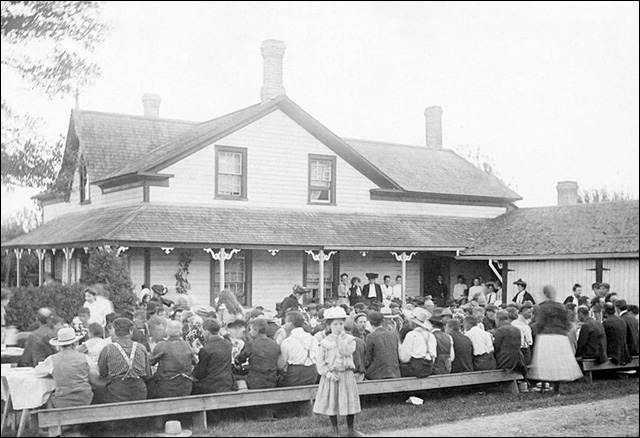
The scene of a barn raising supper held at Markham, Ont. in 1905.
As a youngster I often rode about the countryside with my father and it was always an enjoyable pastime. He spoke of different families and where they lived and often commented on what great stewards of the land many of them were. He was always impressed by those who took special care to have their properties and buildings in good order. He felt it said a lot about a person. Perhaps it explains at least in part why I have continued to admire the sight of a nice old barn.
Do you have a story or a special memory connected with your favorite barn?
I have included what I believe to be some very interesting photographs of barns, mainly of the older variety. Barns have tended to be regional in nature as they were built and designed with specific needs in mind and also at times took advantage of local materials . Suffice is to say that it is unlikely that any two were ever identical.
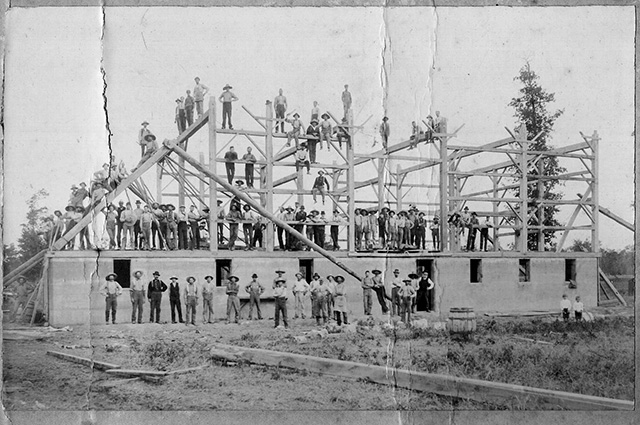
This vintage photo was taken around 1900 at an obscure village called Quinn in Kent County, Ont. at my grandfather's farm as his new barn was being built. Barn raising bees were a common occurrence back then as neighbours joined together to assist in the construction process. Framers, as they were called, were carpenters skilled in the art of barn building. These artisans did all of the layout and intricate planning required and the others did the heavy lifting. [Author's collection]
When the actual barn raising took place many volunteer workers, usually neighbouring farmers, gathered to put the pieces in place much like a huge jigsaw puzzle. It was another form of the collective effort that was typical of that age of agriculture. Workers of all ages and abilities were welcomed, with the highlight of the day (or days) being a hearty meal served by the new barn owner's wife and other neighbouring ladies.
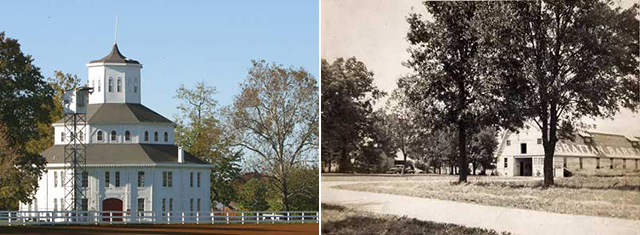
Left: The famous round barn at the Red Mile in Lexington Kentucky, an iconic sight for lovers of harness racing and its rich history. Right: Grattan Bars once Canada's most famous horse had a specially designed Kentucky style barn where he stood at stud and was showcased for many years. This unique barn, complete with the name on the roof, was built by the horse's owner Fred Thrower and stood at Kerwood a small community north of London near the town of Strathroy.
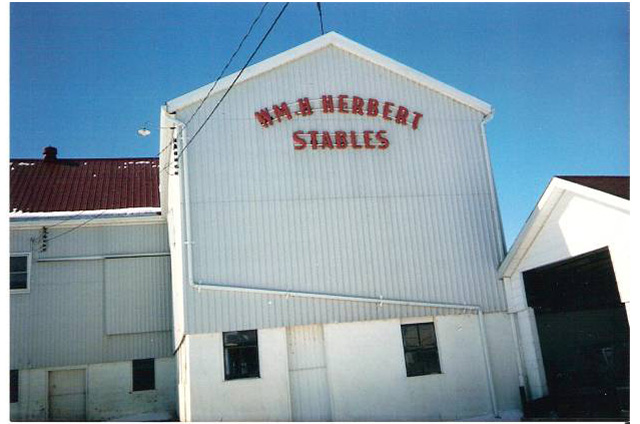
The barn of Wm. H. Herbert located at Lambeth, Ont. The birthplace and early training grounds for many great horses of the past century. I took this picture many years ago while visiting William. [Author's Collection]
Countless barns have been converted from their original use to housing horses. Also many horse folks have built their own version of the 'perfect' barn.

